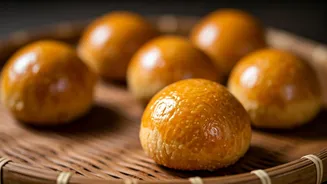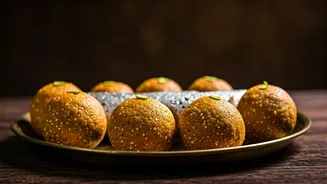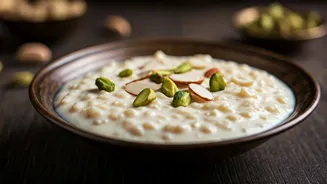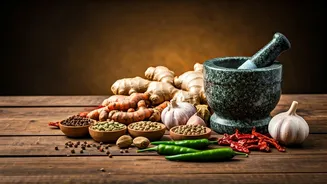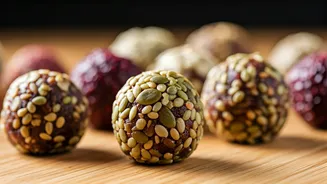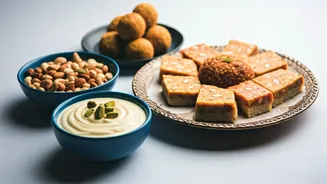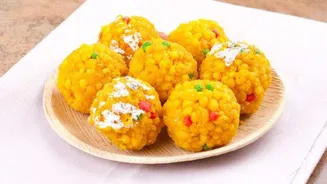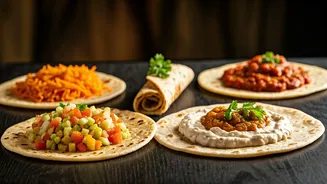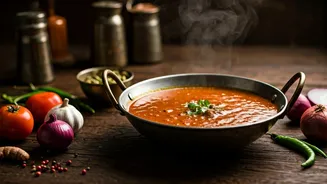Thekua's Essential Ingredients
Thekua's magic starts with the right ingredients. First and foremost, you'll need whole wheat flour (atta), which provides the base structure. Then, add
semolina (suji) for a slightly granular texture and a light, crispy quality. Next, comes the sweetness: powdered sugar or jaggery (gur) works best. Choose between the two based on taste. Now, the flavor enhancers: cardamom powder (elaichi) and fennel seeds (saunf) are crucial for that authentic aroma. Ghee or clarified butter adds richness and acts as a binder; use a good quality one. Finally, some water is needed to bind the dough, and you'll need oil or ghee for deep-frying. These components are simple but create a symphony of flavors.
Preparing The Dough
Proper dough preparation is the key to perfectly shaped and textured thekua. Start by sifting the flour and semolina together. Then, incorporate the sugar or jaggery, cardamom, and fennel seeds. Next, melt the ghee and mix it into the dry ingredients. Slowly add water, little by little, until a firm dough forms. Avoid adding too much water, as this will impact the shape and texture. The dough shouldn't be too soft or sticky. Rest the dough for at least 30 minutes, covered. This allows the ingredients to meld and develop flavor.
Shaping And Molding
Shaping thekua requires a little patience. Traditionally, thekua is shaped using a mold. However, you can also use your hands or a fork. If using a mold, lightly press the dough into the mold and then gently tap it to release. If you're shaping by hand, roll small portions of dough into balls, then flatten them, and use a fork to create patterns. Ensure the thickness is even to ensure uniform cooking. This process can be enjoyable, and the patterns add to the appeal.
Frying The Thekua
Frying is the critical stage that determines the final texture. Heat oil or ghee in a deep pan. The oil should be hot but not smoking. Gently drop thekua into the hot oil, ensuring not to overcrowd the pan. Fry the thekua over medium heat, turning them occasionally to ensure even browning. The thekua is ready when it turns golden brown and becomes crisp. Remove them using a slotted spoon and let them drain on absorbent paper. Proper frying is essential for a crisp, delicious thekua.
Storage And Serving
Once cooled, thekua should be stored properly to maintain its crispness. Let the fried thekua cool completely before storing them in an airtight container. This will keep them crisp and prevent them from absorbing moisture. They can be stored at room temperature for up to two weeks. Thekua is typically enjoyed as a sweet treat during Chhath Puja, and often with tea or milk.
